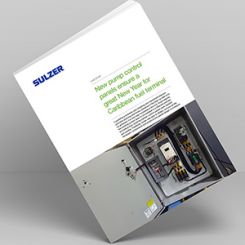Many users have replaced worn-out motors on older pumps. Close-coupled pump motors made before late 2010 did not have a regulated efficiency. In one recent case, a user replacing a 7.5-horsepower (hp), two-pole motor discovered that the motor had been drawing more than its nameplate amperage. This was because the old motor operated at 3,419 revolutions per minute (rpm) and the new motor at 3,542 rpm, which meant the pump was actually drawing 8.3 hp rather than the rated 7.5 hp—and producing more water flow. To adjust output, the pump’s impeller would need to be changed or trimmed based on input from the pump manufacturer. In the motor catalogs of many manufacturers, the speed is often shown at the motor’s synchronous speed (3,600, 1,800, 1,200 rpm, etc., for 60 hertz [Hz]) rather than the actual speed. Actual speed is a result of slip in the motor needed for it to produce torque. Generally, as efficiency increases, the slip decreases, resulting in a higher-speed motor. But there are no strict rules on how much speed a motor might gain with an efficiency increase because this depends on the motor manufacturer’s design. There also may be differences in the designs between manufacturers. Some existing two-pole motors could be 3,450 rpm, while others of the same ratings are 3,470 rpm.
 Table 1. An overview of federal energy-efficiency motor rules (Graphics courtesy of Baldor Electric Company)
Table 1. An overview of federal energy-efficiency motor rules (Graphics courtesy of Baldor Electric Company)History of Energy-Efficiency Regulations
Premium-efficient motors were introduced in the early 1980s, but an official NEMA standard was not released until mid-2001. Upgrades to premium motors were voluntary until December 2010. With the amended U.S. Department of Energy rule going into effect in June 2016, almost all 1- to 500-hp three-phase motors manufactured today are premium-efficient.Adjustable Speed Drives
Instead of controlling flow with a valve, the pump’s speed may be throttled by adding a variable frequency drive (VFD) to the system. This VFD changes the input voltage to a pulse-width modulated wave form, which supplies the motor with a different voltage/frequency to reduce the motor’s speed. The VFD changes the alternating- current (AC) sine wave to direct-current (DC), then chops it up into a pulse-width modulated wave form, which simulates a sine wave. Figure 1. A VFD can provide significant energy savings.
Figure 1. A VFD can provide significant energy savings. Table 2. Affinity law for centrifugal loads
Table 2. Affinity law for centrifugal loads
